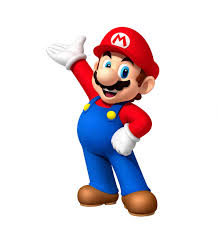Video Game Characters, are the heart and soul of the gaming experience. They are not only the avatars we control but also the narratives we engage with and the emotions we feel. From heroic protagonists to memorable antagonists, these characters have become cultural icons, influencing not just the gaming landscape but also broader pop culture. This article explores some of the most iconic video game characters, their evolution, and their impact on the industry and players alike.
The Heroes
1. Mario
Arguably the most recognizable video game character of all time, Mario is the face of Nintendo and the gaming industry itself. Created by Shigeru Miyamoto, Mario made his debut in Donkey Kong in 1981 and has since starred in numerous games, including the Super Mario series. Known for his cheerful demeanor and adventurous spirit, Mario has become synonymous with platform gaming, inspiring countless sequels and spin-offs.
2. Link
The courageous hero of the Legend of Zelda series, Link is celebrated for his bravery and quest to rescue Princess Zelda and defeat the evil Ganon. First appearing in 1986, Link’s character design has evolved over the years, but his core traits—courage, determination, and a sense of adventure—have remained constant. The series is renowned for its rich storytelling and immersive gameplay, making Link a beloved character in gaming history.
3. Lara Croft
Lara Croft, the iconic archaeologist and adventurer from the Tomb Raider series, broke barriers for female characters in video games. Debuting in 1996, Lara is known for her intelligence, athleticism, and resourcefulness. The character’s evolution over the years, especially with the recent reboot of the series, has made her a symbol of empowerment and resilience in gaming.
The Villains
1. Bowser
As Mario’s arch-nemesis, Bowser has been a staple in the Super Mario franchise since the beginning. Known as the King of the Koopas, Bowser is characterized by his fiery breath and penchant for kidnapping Princess Peach. His larger-than-life personality and memorable design make him one of the most enduring villains in video game history.
2. Sephiroth
From Final Fantasy VII, Sephiroth is often regarded as one of the greatest video game villains of all time. With his silver hair, iconic Masamune sword, and haunting theme music, Sephiroth represents the complex nature of villainy—driven by tragedy and ambition. His impact on gaming narratives has been profound, inspiring numerous other characters and stories.
3. GLaDOS
The AI antagonist of the Portal series, GLaDOS is known for her dark humor, cunning intelligence, and chillingly calm demeanor. Her memorable quotes and unique personality have made her a standout character, illustrating how a villain can be both menacing and entertaining. GLaDOS challenges players in both gameplay and narrative, creating a unique and engaging experience.
The Evolution of Character Design
Over the years, video game characters have evolved significantly in terms of design, depth, and narrative complexity. Early characters were often limited by technology, resulting in simplistic designs and backstories. However, as graphics improved and storytelling became more sophisticated, characters evolved to reflect more nuanced personalities and arcs.
Modern characters are often multi-dimensional, facing moral dilemmas and personal growth throughout their journeys. Games like The Last of Us, Bioshock, and Mass Effect emphasize character development, allowing players to form emotional connections with protagonists and antagonists alike.
The Impact of Characters on Gaming Culture
Video game characters have transcended their digital origins, becoming cultural icons. They appear in merchandise, movies, and television shows, solidifying their place in popular culture. Characters like Mario, Sonic the Hedgehog, and Master Chief have not only influenced gaming but have also shaped the entertainment industry as a whole.
Moreover, the diversity of characters in modern games has led to more representation, allowing a wider range of players to see themselves reflected in the stories they engage with. This shift is crucial in fostering inclusivity and expanding the gaming community.
Conclusion
Video game characters are integral to the medium, serving as the conduits through which players experience adventure, challenge, and emotion. From heroic figures like Mario and Link to complex villains like Sephiroth and GLaDOS, these characters have shaped the gaming landscape and left an indelible mark on pop culture. As the industry continues to evolve, we can expect even more memorable characters to emerge, enriching our gaming experiences and inspiring future generations of players.




